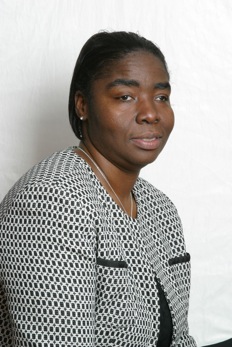Like so many trip planning sites, Tripshare?grew out of a desire to apply some modern technology to offline itinerary planning and sharing.
The company was founded in 2011 but only emerged from beta last week with the launch of an enhanced application for iPad.
Founder and CEO Bob Dana, who formerly headed up finance at Virgin America, is joined by Eric Kapke as vice president of engineering and acting chief technology officer. Kapke replaces the original CTO Ken Goto.
To date the company has received $1.47m in funding from three external rounds and it plans to raise additional funding in the third quarter of this year.
Here?s Tripshare?s take on the size of its potential market:
OTA commissions are roughly $15-20 billion, dominated by hotel bookings. If just 10% of such bookings are for trips that would benefit from the use of draft itinerary creation and sharing, then Tripshare?s total addressable market is $1.5-2.0 billion. As an affiliate, our share of this market opportunity is 40-50%. The market opportunity is further reduced because Tripshare?s booking capability is presently limited to the iPad, though the company expects to add booking from the web in Q3 2013.
Competition is just about everyone from OTAs, meta-search engines and flash deal sites to travel supplier direct websites and applications although they don?t tend to offer itinerary creation and sharing tools.
Further competition lies in social travel sites and applications including Igougo, Gogobot (TLabs here), Wanderfly (acquired by Tripadvisor in October), Trippy (TLabs here)and the list goes on although Tripshare sees these as more focused on the inspiration phase with heavy emphasis on sharing.
A third category of rivals is the companies focused on creating real, multi-category itineraries with dates and times such as Tripomatic (TLabs here), Triporama, Yahoo?s Goplanit, Utrip (TLabs here), Plnnr?(TLabs here)and Traverik (TLabs here) although Tripshare says none have the ability to store and update price and availability.
When it comes to making money, Tripshare gets a share of revenue from affiliate distribution agreements in place with content partners including Expedia Affiliate Network, Fly.com, Viator and HomeAway. The hope is to attract users and become profitable via features and functionality.

Describe what your start-up does, what problem it solves (differently to what is already out there) and for whom?
Tripshare is the first travel planning app to let users create bookable itineraries with actual dates, prices and availability for flights, hotels, vacation rentals and tours. Tripshare trips are more than wish lists. They are real and actionable.
It is ideal for complex trips or for people who plan travel meticulously. Tripshare is also a good fit for small groups traveling together to attend weddings, family reunions, or sports events. The team also sees interest from professionals including travel agents, tour guides and B&B and vacation rental owners who seek a better form of communicating itinerary information to, and getting feedback from, customers.
Why should people or companies use your startup?
Online travel offers many services for inspiration and for booking, but between them is a gap ? the need to collect, organize, and share specific information before committing. For complex trips or to collaborate with others, travel planners create draft itineraries. Tripshare?s research shows that 55% of US adults have made itineraries, overwhelmingly for leisure travel. Yet modern tools are lacking; over half of these itineraries are still created with pencil and paper.
Tripshare aims to bring the draft itinerary into the 21st century with multi-category map-based search, a drag-n-drop trip editor, and trip ?meta data? (photos, descriptions, reviews and pricing) that is not only stored with the itinerary but update-able in real time and available to anyone with whom the trip is shared.
Other than going viral and receiving mountains of positive PR, what is the strategy for raising awareness and getting customers/users?
As an iPad app, initially we will benefit from positioning within Apple?s iTunes App Store, eg on May 16th their editorial staff designated us as a ?New & Noteworthy? app in the travel category. Tripshare also hopes to gain traction by focusing on early adopters who actively create and share trips for other people to use. Consumers may see Tripshare as a ?tool for self expression?, creating and sharing trips much the same way they create and share music playlists.
With the introduction of trip creation on our website, Tripshare expects to broaden its appeal to professionals including travel agents, tour guides and B&B and vacation rental owners. We hope professionals will use our product for ?B2C trip sharing? as a way to convert leads into customers. In the second half of 2013 we expect to introduce features that address this market specifically via a Pro account. Each trip shared exposes us to a new potential user.
How did your initial idea evolve? Were there changes/any pivots along the way? What other options have you considered for the business if the original vision fails?
We have remained true to the concept of trip creation, sharing and booking in a single experience. What we learned through our soft launch and feedback from our first 20,000 downloads is that users wanted (i) more browse-able featured content prior to the exercise of creating a new trip, and (ii) a simpler, more intuitive interface. Our new release, Tripshare v2.0 for the iPad, addresses these issues.
If retail consumer adoption proves more difficult than expected, then we will focus more of our resources on the professional community, especially traditional travel agents. Tripshare can replace existing back-end supplier sources with content that is commission-able to travel agents, optimizing our product for that market. If consumers like our product but we find it too time consuming or expensive to build the Tripshare brand, we can pursue white label opportunities as well.
Where do you see yourselves in 3 years time, what specific challenges do you hope to have overcome?
Tripshare?s product strategy is based on making continual advances in four core areas:
- Content
- Features
- Platforms
- Community
2013 will be about bringing Tripshare to the web and adding one or two new content partners that add new categories of content, e.g. car rentals. With incremental funding we will also bring Tripshare to the iPhone. 2014 will be all about creating a community.
In three years, we hope to have at least a million active users and to be profitable. We will be delighted if we are seen as ?Tripit for before you book.?
What is wrong with the travel, tourism and hospitality industry that requires another startup to help it out?
We are first and foremost a technology company and we are tackling one of online travel?s hardest problems ? the draft itinerary. People already create draft itineraries for complex trips, to gain consensus on travel decisions, or to persuade others to join them. Our research shows that over half of such trips are still made with pencil/pen and paper.
Our challenge lies in combining multi-category search, cloud-based itinerary storage, real-time synchronization and price/availability updating, and booking into a simple, intuitive interface that consumers can use without a 50-page operating manual. Others have tried and come up short. We hope our winning combination will be based on deep experience, strong technical capability, focus on our core mission, and above all the courage of our convictions.
Tnooz view:
When Tnooz and its team of nodes set out predictions for 2013, mobile apps and B2B startups were tipped by many. Tripshare has both these elements and perhaps it will be those that see it through these first difficult years. And, so far, it?s funded.
However, with just about everyone, old and new as your competitor, you?ve got to wonder how another trip planning service will gain traction. Only last week social travel app Twigmore decided to call it a day, in November Gtrot pivoted to become a gift service while a year ago travel inspiration startup Joobili closed.
All of that said, Tripshare has lots going for it, established affiliate distribution partnerships, an improved user interface after months of feedback and a nifty trip editor tool to name just a few.
Up next will be a bookable website and more funding and if B2C and building a community proves too difficult, time-consuming and expensive the startup will explore further B2B and white-label options.
Tripshare seems to be setting out its store based on the ability to store and update itineraries with the latest pricing and availability and only time will tell if the technology is good enough to alleviate the pain of trip planning (and booking) once and for all.
Just another startup with ?trip? in its name or something more?
Video:
 ?
?
NB: TLabs Showcase is part of the wider TLabs project from Tnooz.
Related posts:
- Fortnighter aims to bring travel writer trip itineraries to the masses
- TouristPath wants to be the world?s largest tourism database with social travel planning thrown in
- Tripomatic enters busy planning and personal travel itinerary market
Frank Ocean Gay bill clinton andy roddick Costa Rica Earthquake sandra fluke costa rica Earthquake Costa Rica

















 Dr. Hamsa Thota is the president of Innovation Business Development, Inc., an innovation performance training and consulting company in the USA. He was past president and chairman of the Product Development and Management Association (PDMA) and most recently served as the secretary of PDMA Research Foundation (2006-2012). He is advisor to the ?Art of Science Learning? project (2012-2016), a US National Science Foundation (NSF) funded project to spark creativity in Science, Technology, Engineering and Mathematics (STEM) education and the development of an innovative 21st century STEM workforce. He was a visiting professor at the Management School of the Zhejiang Univeristy and an honorary professor at the Geely Automotive Engineering Institute in China.
Dr. Hamsa Thota is the president of Innovation Business Development, Inc., an innovation performance training and consulting company in the USA. He was past president and chairman of the Product Development and Management Association (PDMA) and most recently served as the secretary of PDMA Research Foundation (2006-2012). He is advisor to the ?Art of Science Learning? project (2012-2016), a US National Science Foundation (NSF) funded project to spark creativity in Science, Technology, Engineering and Mathematics (STEM) education and the development of an innovative 21st century STEM workforce. He was a visiting professor at the Management School of the Zhejiang Univeristy and an honorary professor at the Geely Automotive Engineering Institute in China.